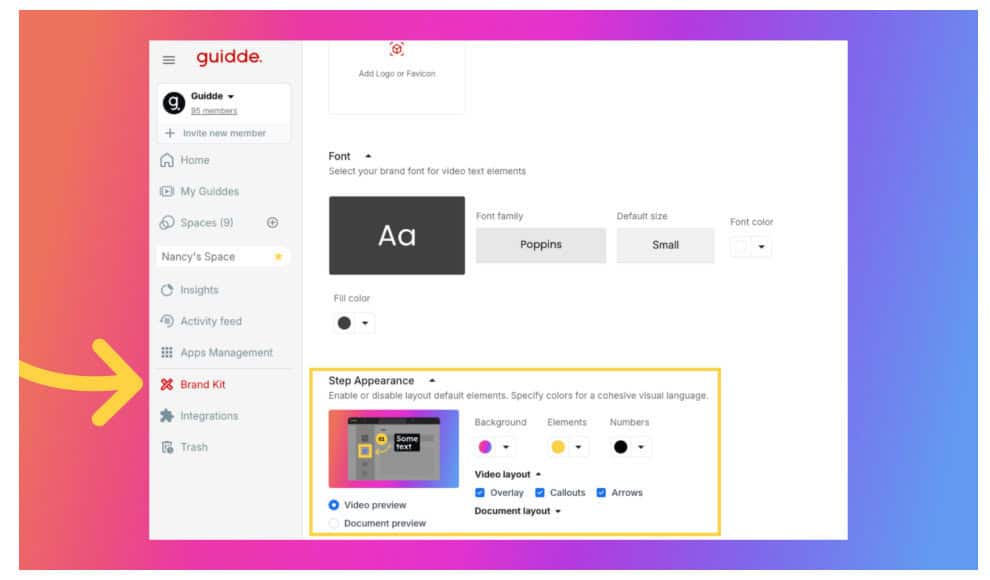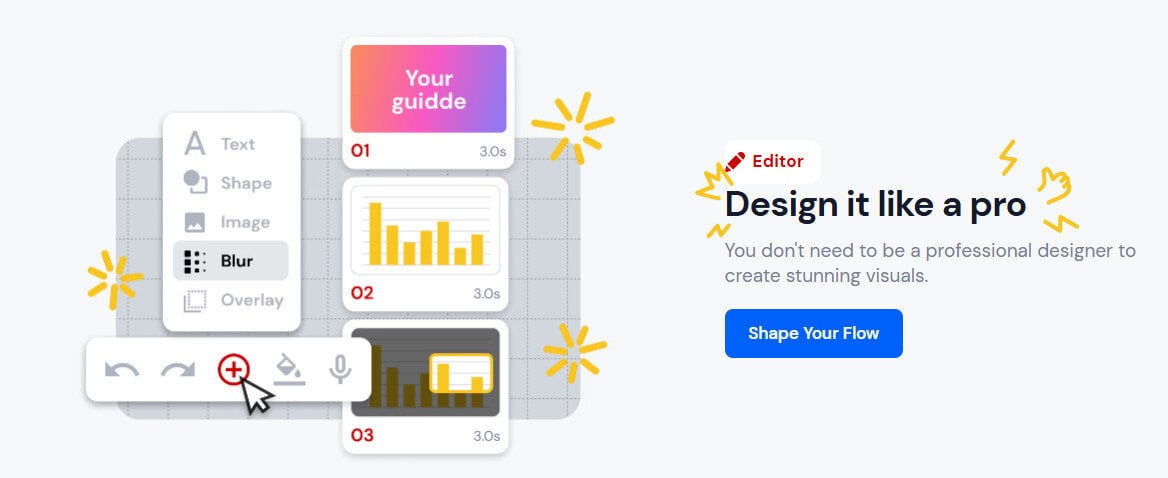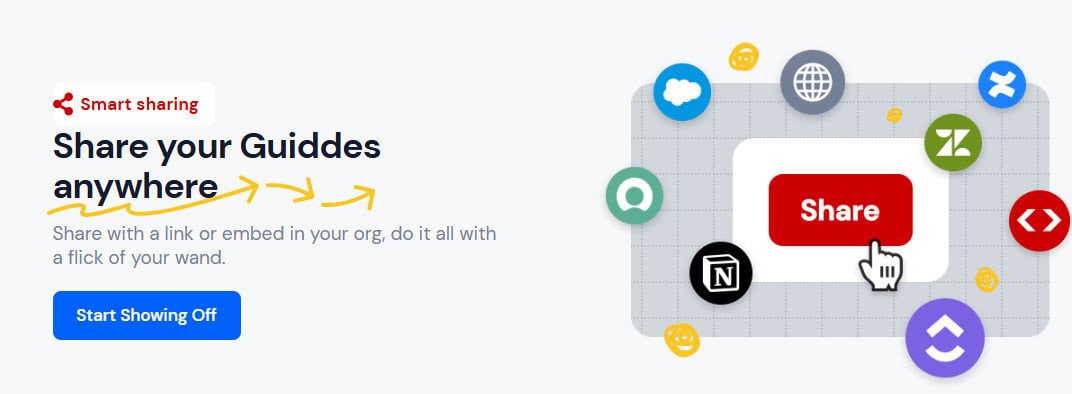- Why Videos Can Be More Effective Than Documentation for Training
- Different Types of Training Videos May Include the Following
- How to Create Training Videos
- 1. Define Your Audience and Purpose
- 2. Create Your Script and Structure
- 3. Choose the Right Tool for Your Video
- 4. Creating Your Video: Guide, Tips, and Best Practices
- 5. Post-video Creation Factors to Consider
- 6. Summary
Last Updated on November 19, 2025 by Ewen Finser
With the rise of technology and now AI, adapting to modern ways of training individuals is a critical step for organizations to stay ahead of the curve when it comes to employee engagement and upskilling. Relying on document-based training guides and extensive text-heavy manuals has proven to be a less effective strategy and is becoming more outdated.
Training videos are an essential part of this process; however, creating successful training content takes careful planning and execution.
Why Videos Can Be More Effective Than Documentation for Training
- Ideal for asynchronous and global organizations – People can access and watch at their convenience, making this a perfect way to share learning and training content.
- Video is more accessible and user-friendly – Viewers can watch at their own pace, slow down, repeat, or add translations or captions if needed. Some people may struggle with reading lengthy documentation, and video content is a great way to ensure better accessibility across your training guides or content.
- Videos are more engaging than text – Video content can be edited with images, music, and callouts to help viewers follow complex concepts, products, tools, or procedures easily. Using modern video editing can help keep viewers’ attention more successfully than documentation.
- Some training video tools offer analytics and insights – Being able to drill down into how viewers engage with the content can help organizations see where people are getting stuck or replaying key sections. You can make further tweaks by analysing data points and help make your training content more user-friendly and relevant if needed.
This guide will take you through some of the best practices to follow and what tools are recommended for creating successful training content. Organizations don’t need to spend thousands of dollars making videos, and certainly don’t need to outsource this task to expensive video production companies.
I’ll give you some hands-on examples using one of my go-to tools for these processes to provide you with an idea of how easy creating videos for training can be.
Before diving into the nitty-gritty of video creation, you’ll need to follow some basic steps first. We’ll break down each step and the essential factors to consider.
Depending on your goal and purpose, it’s important to look into best practices for each training video type, too.
Here’s a quick overview of some of the more common training video categories.

Different Types of Training Videos May Include the Following
- Documentation, SOPs, and guides: Step-by-step guides help users understand complex systems or tools. Visualizing lengthy processes (such as standard operating procedures) can be made more transparent and more straightforward to understand when broken down into a video. Videos containing a visual diagram, images, and concepts can be a great way to save time when needing to explain complex platforms or software tools.
- Onboarding videos: Onboarding new employees can be exceptionally time-consuming, and having a quick overview of repetitive general information can save organizations resource time by avoiding duplicate tasks that can be automated wherever possible.
- Skills development and learning: Training videos can serve as short courses to help users upskill and learn about a specific task or knowledge area. Some organizations have built-in learner management systems (LMSs) that have video-based content and knowledge checks as part of the process, which helps users reach specific key criteria.
- Tutorial, product tut & procedural videos – These are typically a “how-to” on performing a specific task. These could include more complex systems as mentioned above, but they can also include guides on procedural steps to follow in different instances or scenarios. These could consist of what to do in an emergency or tasks like security and safety, such as those that fall under specific compliance or policies.
Guidde puts it ALL together for me. I've used many screen recording tools (like Loom). I've used many SOP buiding tools (like Trainual). But Guidde puts the best of both together for a quick, easy to use mixed media documentation builder in one (less expensive) workflow. A small, but signficant (compounding) time saver in our business.
How to Create Training Videos
1. Define Your Audience and Purpose
- Your audience should be the primary guiding factor before setting up scripts and training content. Consider whether the users are technically savvy or not, how they would typically want to receive training material, and the format and style thereof.
- Different age groups prefer to consume content in various ways, so ensure your videos and imagery are angled towards different age groups in a way they can relate to.
- Understanding your audience ensures that you craft engaging content that fits the purpose of the training to ensure it’s valuable and easy to follow.
2. Create Your Script and Structure
- Your script will define the content of your video. Ensure it’s planned, structured, and set up according to your goals.
- Avoid lengthy scripts that are too long (or too short) and ensure that they fit the visual or audiovisual content.
- Scripts should be written with the topic in mind. Try to script each video to one topic or training area to avoid confusing users.
- Scripts (or summarized versions) can be included as closed captions, which help users follow if they find it easier to read along when viewing the video.
- Structure should be consistent as much as possible. If a new user is following a series of videos, it can be helpful and clearer when there is a predictable, easy-to-follow structure to follow across a range of topics.
- Keep in mind, there are many tools that can help create your script with AI, so look out for tools with value adds that can help automate some of these processes, such as script creation.

3. Choose the Right Tool for Your Video
There are several options for training video platforms out there to choose from. Try to select those that match the purpose of your video to ensure that you’re saving time when creating the video and achieving the goal of the training.
Quick Picks for Video Platforms for Training Purposes:
- Loom – Loom is ideal for creating quick, simple, and screen recordings for internal training. It also works well for teams that need to summarise meeting notes and share video recordings. Training asynchronous groups can be challenging across time zones, so Loom could be an excellent tool for pre-recorded sessions, which can be shared.
- Synthesia – Ideal for avatar-based AI training content. Some users may feel uncomfortable about having their video recorded, and Synthesia is an ideal tool for users who want to retain the human-interaction element without using their own face.
- Guidde – Best for training videos for capturing workflows, creating walkthroughs, and SOPs. Creating walkthroughs of documentation, training material, product tutorials, or technical knowledgebase articles can be time-consuming and generally text-heavy. Guidde makes use of AI to summarise and condense information into a user-friendly video that can be edited and customized.
- Powtoon – Ideal for creating animated training content that’s engaging and fun. Powtoon is a great option for creating lessons for users who need additional visual animations or social media and other educational content.
- Trainual – Internal training videos with a strong focus on onboarding and compliance, with ways to track user engagement and quizzes. Trainual is ideal for users who need to create training material for LMSs.
- Camtasia – Ideal for teams needing external-facing studio-quality training guides or customer guides. Camtasia is ideal for users who want to create high-quality content and require advanced editing capabilities with multiple input sources.
4. Creating Your Video: Guide, Tips, and Best Practices
Make Your Message Clear From the Outset:
- Make the intended purpose clear to your audience so that they know what value they’ll derive from the training content.
Viewers shouldn’t get to the midway point through the video to realize that the topics covered aren’t relevant to them.
Ensure Your Headline Image and Title Stand Out:
- Viewers should know what the training content will cover, so make the introduction engaging and clear, and include an agenda or table of contents, which brings me to another important consideration.

Add Your Branding and Personalization:
- Organizations should brand video content where possible. Having the company logo, corporate identity colours, and branding can bring across a professional and consistent feel. I specifically choose tools like this, such as Guidde, which has a complete brand kit available to ensure a consistent intro/outro and overall branding on all videos.

Avoid Covering Multiple Topics or Major Learning Areas in the Same Video. Consistency and Conciseness are Critical for Various Reasons:
- Training content can be hard to follow and lead to disengaged viewers if the focus is too broad (or too complex).
- Key topics can be hard to find. Consider how you’ll share and provide access to training content. Sharing methods may include an LMS, online repository such as a SharePoint site, shared folder, knowledge base, or part of a training program. Regardless of the way the material is stored, viewers should be able to quickly locate specific videos related to core training areas easily.
- Building out complex learning areas, processes, or documentation is easier when you’ve broken significant components down into various modules that can be built on and added to over time.
- Sharing a snippet for a specific knowledge area is much easier and far more effective when users need to revisit a select part of the training without needing to rewatch hours of video to pinpoint a specific area.
- Training video content shouldn’t be too lengthy, as you’ll want to keep viewers engaged. Keep videos concise and to the point/on single topics to increase engagement. A good measure is around 7-15 minutes for a specific topic.
Check Your Audio and Camera:
- Once you’ve selected your tool, created your script, and prepared your structure, ensure you have other essential elements set up. If you’re using a microphone or headset, always run a test before creating a full video and realise the sound didn’t capture correctly.
- Sometimes this may be difficult to do, and it is not always necessary depending on the content and structure of your video. I like using tools, like Guidde, that give me the freedom to choose if I prefer to use a natural-sounding voice-over if needed.
Editing and Finishing Touches:
- Video editing can help you create a polished and professional product. I like to use tools that allow users to easily edit videos without requiring advanced editing skills.
Many tools have the option to include captions, music, voice-overs, and pop-ups or callouts. These are all great ways to help enhance the engagement of your training content.
Finalising Your Video Creation Process :
- Finally, remember to add summary documentation, handouts, or supporting material so that users can go back to key components when required without sifting through all videos for specific information.
- Contact details, such as a help site, email address, or phone number, should also be included so that if your viewers are getting stuck or experiencing issues with the training videos, they can quickly reach out for assistance.
5. Post-video Creation Factors to Consider
- Analytics are such a valuable factor for measuring the success of your learning content. Some tools record views, video visits, clicks, and overall engagement, which can help you understand if your content is being watched from start to end and engaged with as expected. You can make smart decisions and changes, and drive better adoption and retention with the use of analytics.
- Your content should be easily shareable so that users can access it at any time and collaborate with other team members. I like tools that enable a quick and easy download option.
- Captions and scripts can increase accessibility. I suggest making use of tools that help automate this process.
Tools like Guidde have advanced capabilities that create captions automatically with the use of AI. AI features like these can be a great way to save time and easily put your content together without needing to capture each step throughout the video manually.
Guidde puts it ALL together for me. I've used many screen recording tools (like Loom). I've used many SOP buiding tools (like Trainual). But Guidde puts the best of both together for a quick, easy to use mixed media documentation builder in one (less expensive) workflow. A small, but signficant (compounding) time saver in our business.
6. Summary
Training videos have become an essential part of the learning, onboarding, and upskilling process of any organization, and they are a great way to ensure your content is exciting and engaging.
When employees have ease of use, access, and a way to engage with learning areas quickly, this helps drive adoption and can increase satisfaction when it comes to onboarding or learning new material.
Companies no longer need to pay thousands of dollars for professional editing and can make use of multiple tools that help speed up the training content creation process.
I recommend choosing a straightforward tool that will save time and help you build out your training knowledge areas quickly and with ease.





